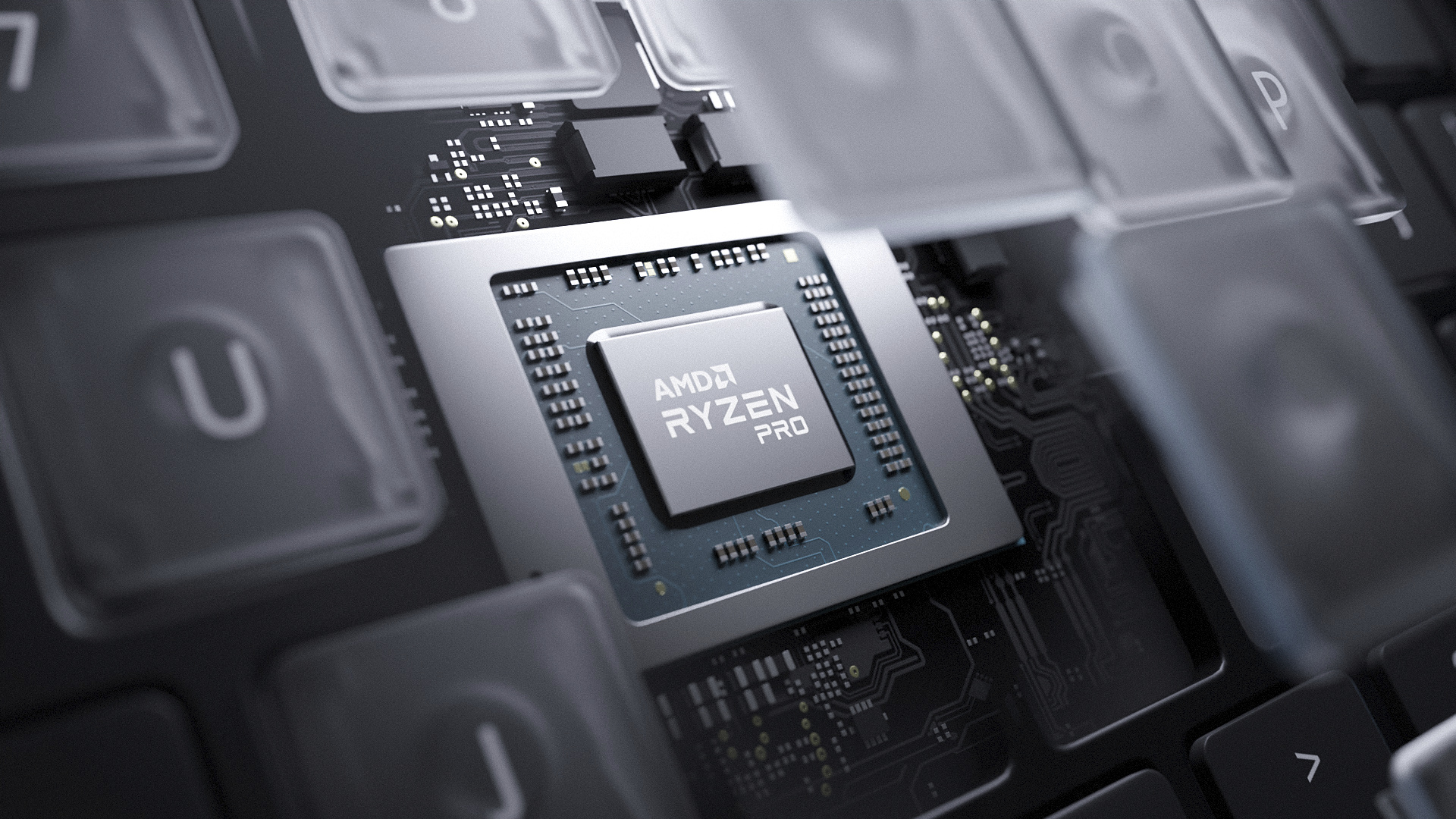AMD has announced the AMD Ryzen AI Pro 300, an enterprise-focused lineup that will bring more powerful AI chips to businesses and organizations to improve collaboration, security, and more.
The new lineup will feature three chips for Copilot+ PCs, the AMD Ryzen AI 9 HX Pro 375, the AMD Ryzen AI 9 HX Pro 370, and the AMD Ryzen AI 7 Pro 360.
These new chips are a significant step up from the previous Pro generation, the AMD Ryzen Pro 8040 series, and are the first processor series explicitly designed for enterprise users to be Copilot+ compliant.
Swipe to scroll horizontally
AMD Ryzen AI Pro 300 SKUs
Header Cell – Column 0 AMD Ryzen AI 9 HX Pro 375
AMD Ryzen AI 9 HX Pro 370
AMD Ryzen AI 7 Pro 360
CPU Cores 12 cores / 24 threads
12 cores / 24 threads
8 cores / 16 threads
Max Boost Frequency 5.1 GHz
5.1 GHz
5.0 GHz
Cache 36MB
36MB
24MB
Graphics AMD Radeon 890M
AMD Radeon 890M
AMD Radeon 880M
NPU 55 TOPS
50 TOPS
50 TOPS
In addition to a much more powerful NPU (up to 55 TOPS for the Ryzen AI 9 HX Pro 375), AMD says the underlying Zen 5 cores in the CPU offer substantially more multithreaded performance compared to Intel ’s competing Core Ultra 7 vPro chips, based on the Intel Meteor Lake architecture.
Intel Lunar Lake processors launched last month, and at the moment there are no vPro versions of these chips, so a more direct comparison isn’t possible yet, but these new Lunar Lake vPro chips are expected to launch before too long.
In addition to the claims of improved performance, AMD says laptops running its new Ryzen AI Pro 300 series chips will get up to 23 hours of battery life, a substantial increase over previous generations of chips, and that the NPU in these new Ryzen AI Pro 300 chips will empower new multi-layer security features for the kind of protection that enterprise devices need.
Can AMD make headway in Intel’s backyard?
While Intel has undoubtedly been on the ropes lately, one area where it retains an absolutely dominant position is with its laptop chips. While the numbers fluctuate every quarter, Intel’s laptop market share currently sits at just below 72%, so it is a crucial revenue source for Team Blue when it is facing strong headwinds elsewhere.
That said, it has already lost substantial market share to AMD over the past five years, and given the nature of enterprise procurement channels, AMD making headway among businesses with laptops powered by its chips could further erode Intel’s position.
It remains to be seen what Intel Lunar Lake vPro chips will do when they launch in the months ahead, but any advantage that AMD can gain now with Ryzen AI Pro 300 will help it claw its way to parity with Intel, while also providing customers with more options and better innovation through competition.
More from TechRadar Pro






















+ There are no comments
Add yours